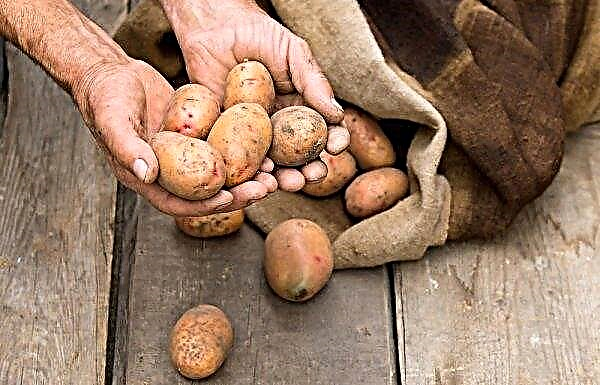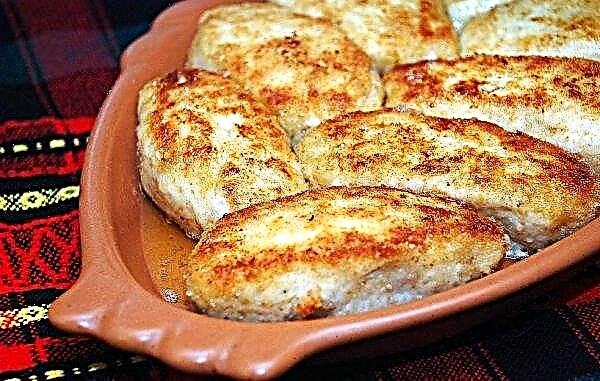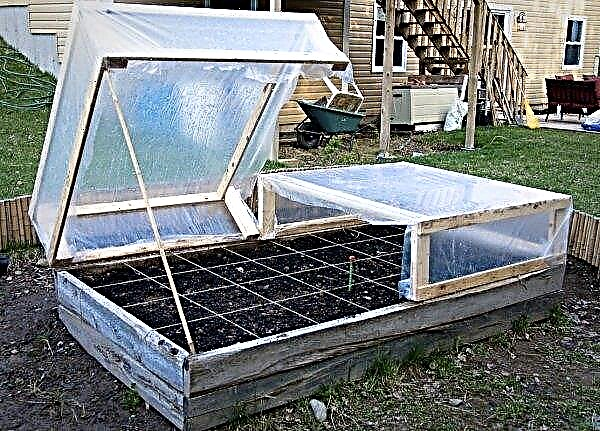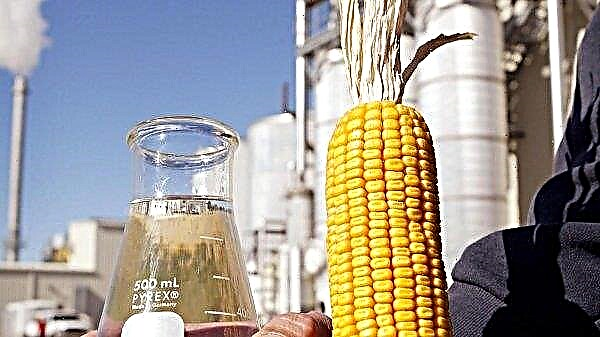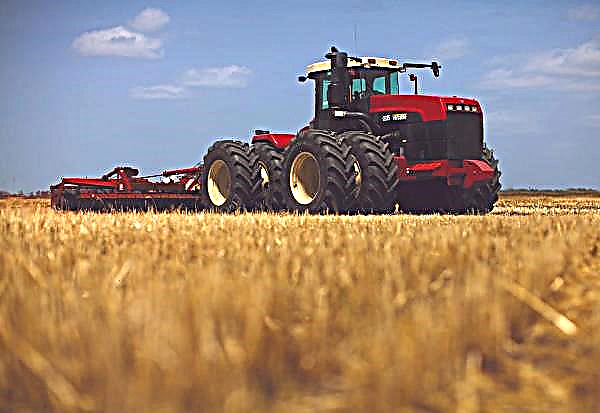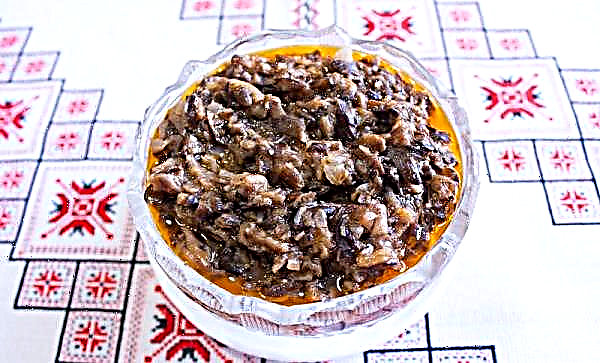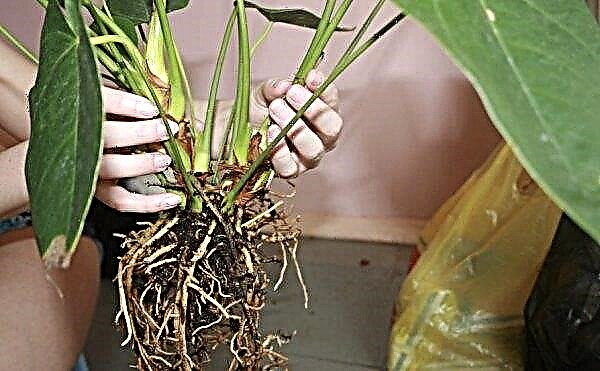Cabbage is a fortified product that contains a complex of macro- and microelements. Surely every housewife raises the question of the rational storage of cabbage forks. And without following the basic rules, preserving a vegetable crop in the autumn-winter period will be quite problematic. In this article, we will consider why cabbage turns black, and how to store it correctly.
Important! Cabbage heads, in which Fusarium wilting was found, should not be eaten categorically.
Why cabbage turns black during storage: the main reasons
The main factors leading to the appearance of blackening of cabbage heads both outside and inside are the most common:
- Vegetable culture was chosen for storage already being with signs of external damage (spots, cracks, deformation of the fruit). To avoid quick damage during subsequent storage, visually check for any external damage during the selection of forks. The butt of the cut stem (stumps) should be even, smooth, without changing the structure and color. The cover sheets should be rigid (but not dry), fit snugly on the fork, have a saturated color (inherent in a particular variety, hybrid).
- The appearance of a darkening of the internal structure of the vegetable, which is detected only at the cut and is caused, as a rule, by diseases that hit the plant at the stage of vegetative development on the ridges. The main ailments of the vegetable are: gray rot (fungal infection is detected by the presence of gray plaque and a characteristic smell of mold), fusarium wilting (basically, this ailment affects forks formed in arid conditions, without sufficient watering, and it can be recognized by the state of the vessels on the cut - they will be in characteristic brown spots), alternariosis (the disease manifests itself in the form of a rapid process of decay of the entire leaf volume of a vegetable, as a result of which the leaves can very easily be separated from each other).
- Failure to observe the storage regime of the vegetable itself, in which there is a decrease in oxygen levels and a violation of the temperature regime, which entails a change in humidity parameters. All this leads to the rapid multiplication of pathogenic microorganisms, which in the course of their life make the vegetable unsuitable for further consumption.

Features and rules for storing cabbage
The process of storing vegetables can be both short-term (up to a crescent) and long (winter). In the first case, the vegetable can be stored at room temperature, even without using a refrigerator. The least suitable for storage are young heads of cabbage, which contain a large amount of moisture between the leaf plates, which leads to rapid decay of the fork.
Did you know? Sauerkraut is much healthier than a fresh vegetable. In addition, the beneficial properties of the fermented product are maintained for 10 months.
If the fruit has not yet lost its integrity (not cut), it is better to place it in a dark room (pantry, balcony closet or chest for vegetables) - there it will remain longer. If the volume of the refrigerator compartment allows, the heads of cabbage are wrapped with cling film, parchment paper or newspaper sheets and placed in a vegetable compartment. From time to time, the heads are deployed, inspecting for mold or rot, and also giving an additional flow of oxygen, thereby ensuring subsequent non-waste storage.
As for the long time interval, the process implies the rigorous provision of the following parameters:
- ambient air temperature - 0 ... + 2 ° С;
- humidity - 85–90%.
It is recommended to adhere to the following technological methods:
- If cabbage is grown on its own plot, then when harvesting leave part of the trunk of the plant, on which a wire hook is fixed. Fruits prepared in this way are hung upside down, which ensures a constant flow of air and moisture.
- Upper coarse leaves do not throw in advance - they protect the plugs from drying out quickly. Only in case of damage to the upper cover they are carefully removed.
- The heads with stalks chopped off at the very base of the stalks are wrapped in newspapers and stacked on shelves. at some distance from each other.
- Can be used as a protective film - It will help protect the forks from drying out. They place vegetable products on shelves in the same way as vegetables in a paper "wrapper".
- If the area allows, then on the floor of the cellar or basement a layer (20 cm) of sand of a large fraction is poured, after which the heads of cabbage are kept “stuck” into it, which will keep the vegetable in marketable condition until a new crop.
- Forks of large volume placed there forks sprinkled with fine river sand. This method requires a large space, but the vegetables remain invariably fresh for a very long period.
- There is a storage method "on the ridges" - dig a ditch at the bottom of which a layer of dry straw is laid. Heads are placed on top of it (in one layer), after which they fill the trench with earth and pour a layer of leaves or straw on top to exclude the possibility of freezing.
Did you know? Cabbage head is nothing more than a gigantic-sized wintering bud, giving seeds the next year after germination.
Is it possible to eat blackened cabbage
The answer is no. Changing the appearance gives the presence of fungal or mold formations that are toxic to humans and can cause serious health problems: poisoning, accompanied by severe intoxication of the whole body, allergic manifestations (up to anaphylactic shock), exacerbation of existing chronic diseases and many other disorders in the systems organism. It is strictly forbidden to eat a vegetable that has acquired a dark, gray-green or black color during storage that is unusual for a vegetable culture
It is strictly forbidden to eat a vegetable that has acquired a dark, gray-green or black color during storage that is unusual for a vegetable culture
Cabbage Storage Tips
The first thing you should pay attention to is the quality of vegetable raw materials, which are planned to be laid for storage. Forks with signs of wilting, rot, insects (passages, delayed larvae), mechanical damage are not suitable for long-term storage. In addition, it is necessary to constantly observe the temperature regime and humidity level. Periodically, you should inspect the vegetables in order to identify low-quality specimens and remove them from the storage place in time so that the entire crop is not affected.
Summing up, we can safely say that it is possible to prevent the blackening of cabbage that occurs during storage if you follow the rules for choosing a vegetable crop, preparing it for the storage process and adhering to the storage mode of the vegetable. In addition, it must be remembered that eating spoiled cabbage is unacceptable.Important! If there is no possibility of storing the whole product, freezing and even drying the cabbage can serve as a good alternative. In this case, almost all the useful properties of the product are preserved.




